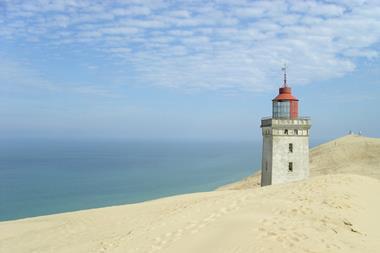Denmark’s main pension providers have reported investment losses across their market-rate, or unit-linked, products for 2018.
Most companies, however, have emphasised the success of downside protection strategies, including allocations to stronger performing asset classes and protective portfolio action taken earlier in the year.
Velliv, which changed its name from Nordea Liv & Pension last year, reported a return related to market-rate products of 4% for 2018, down from a 10.2% gain in 2017.
Total assets fell to DKK219bn (€29bn) by the end of December 2018, it reported, from DKK226bn the year before.
However, it experienced strong business growth during the year, with total contributions rising 6% to DKK20.1bn.
Labour-market pension fund Industriens Pension reported an overall loss of 1.4% for market-rate pensions in 2018, down from its 8.5% positive return in 2017.
CEO Laila Mortensen said no one could avoid being hit when equities and other listed asset classes fell as sharply as they did 2018.
“But in spite of everything, we can be pleased that our large unlisted investments and focus on spreading risk pulled us in the other direction,” she said.
Among individual asset classes, private equity turned in the strongest performance for Industriens with a 12.2% gain last year, while Danish listed shares ended with the biggest loss, dropping 9.3%.
LD cut risk to protect portfolio
Meanwhile LD Funds – which manages a gradually diminishing pension fund based on cost-of-living allowances granted to Danish workers decades ago – reported a loss of 2.5% on investments in its main balanced product, LD Vælger, in 2018.
However, investments had been saved from worse losses, LD said.
“At the end of 2017, LD Funds made a decision to reduce the risk in the investment portfolio, and so LD Vælger’s equities allocation was reduced,” it said.
The pension provider, which is now preparing to run a potentially huge new pension fund based on one-off holiday allowances, added that investment gains in the early part of this year had already amounted to 2.9%.
Danish performance, ranked
Willis Towers Watson in Denmark reported that, while falling stock prices last year hit the country’s pension providers, not all were hit equally hard.
Comparing the country’s main commercial pension providers, the consultancy said PFA and Velliv had been best last year at limiting the damage to the customers with a long way to retirement, while AP Pension delivered the best protection to customers close to pension age.
Meanwhile, Danica, SEB and Skandia generally performed worst among peers in both the short and long term, it said.
Morten Linde, head of savings at Willis Towers Watson, said: “Danica underweighted growth shares and thus missed out on the growth delivered… in the second and third quarters.
“Velliv, which performed better, had an overweight of growth shares in the first half of 2018 and reduced this proportion during the year, which is part of the explanation for their better result.
“At the beginning of the year, SEB had underweight of US equities and overweight of Japanese equities and therefore lost ground, which they did not manage to catch up later in the year.”
In the consultancy’s table of comparable pension fund returns, Willis Towers Watson published returns for balanced market-rate pension products containing 50% equities and 50% bonds. On this basis, PFA, Velliv and AP Pension had the slimmest losses.








No comments yet